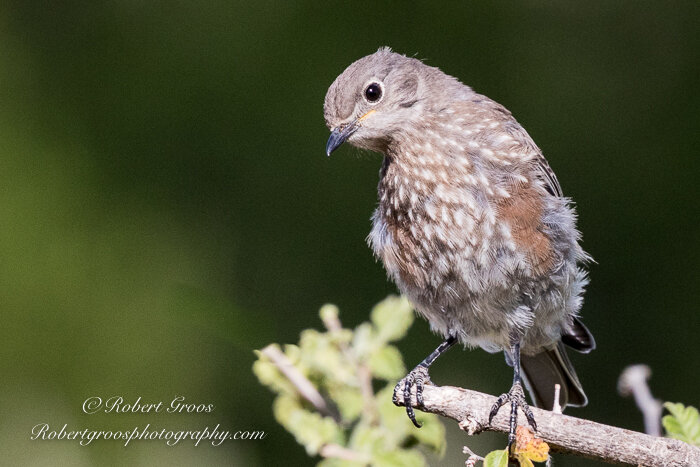Bluebird
The bluebird is very blue, as blue as a brilliant lake. Many moons ago the bluebird used to be white. One day he was flying and came upon a lake and saw how blue and beautiful it was. He stopped and asked Grandfather, "Grandfather, can I be as blue as that lake?" So Grandfather gave him a song to sing. He told him what to do. Every morning for five mornings the bluebird would dive down into the lake singing the song taught to him by Grandfather, then come back up… On the fifth day, the bluebird dove into the lake, and when he came back out, he was as blue as he is today…
-Native American Legend (Pima, Cherokee)
Western Bluebird in flight.
Mountain Bluebird in flight.
Bluebirds have long been celebrated, through oral tradition, literature, and song, as a symbol of the sun, renewal, prosperity, and happiness. In this post, vibrant pixels tell the bluebird story.
The bird we know as “bluebird” is one of three, blue-headed thrushes found only in North America: Eastern, Western, and Mountain. At first glance, male Eastern and Western Bluebirds appear similar: both have have blue heads, wings and backs, with orange breasts. But, the Eastern Bluebird has an orange throat and white belly, while the Western Bluebird has a blue throat and blue belly. Got it? Those are the two key distinguishing field marks.
The Mountain Bluebird stands alone with its beautiful, turquoise blue plumage across its head, back and wings. Rain or shine, it is a stunner. You may find them in western North America at elevations above 7,000 feet.
If you have ever watched a flock of bluebirds enjoying a communal bath, it is easy to understand how Native American tribes envisioned the legend surrounding the bluebird’s origin. The birds take to water with enthusiasm, energetically flapping their wings, splashing droplets everywhere, and putting forth a cheerful chorus of birdsong.
As a child, I learned about bluebirds via the Disney film, Song of the South. The theme song, “Zip-a-Dee Doo-Dah,” rings strong in my memory. Just the thought of it brings a broad smile to my face. You know the lyrics:
“Mister Bluebird’s on my shoulder. It's the truth. It's actual. Ev’rything is satisfactual.”
Unlike Acorn Woodpeckers and swallows that snatch flying insects out of the sky, bluebirds drop down from a low perch to snag caterpillars, spiders, crickets and other insects on the ground. They are voracious insect eaters, so much so that before pesticides, farmers used to install nesting boxes near their fields to protect crops.
Bluebird with large, winged insect in beak.
In winter, when insect populations are reduced, bluebirds rely on fruit bearing plants such as poison oak, elderberry, and coffee berry to supplement their diet. Mistletoe, in particular, attracts bluebirds for the fruit and shelter it provides. Control studies have shown that eradication of mistletoe in an oak woodland ecosystem radically affects the family structure of Western bluebirds, with sons of a breeding pair abandoning the family instead of remaining to help with new broods.
Western Bluebird eating winter fruit.
While living in central New Mexico, I often hiked to a nearby pond and livestock water tank to photograph the wildlife that came there to drink. One winter, I observed flocks of 100+ birds, including Western and Mountain Bluebirds, American Robins, finches and Cedar Waxwings that had morning gatherings there. Watching so many birds simultaneously in flight, or drinking from the rim of the tank, was indeed an enthralling experience.
Western Bluebirds on rim of livestock water tank.
Western Bluebird with nesting material.
Last spring, I installed a nest box with high hopes of soon observing nesting Western Bluebirds. Sure enough, one day a male arrived and inspected the box. He seemed happy with it. During the next few days he danced around a bit with twigs and pine needles in his beak to attract a female. Indeed, a female did arrive. She, too, brought some nesting material, but ultimately decided this was not the place for her. Both bluebirds departed, and the nest box remained empty. Hopefully, this year I’ll have better luck with the nest box in a different tree, and lower to the ground.
With nesting season still a few months off, I look forward to my bluebirds chasing away winter doldrums, and celebrating the arrival of spring. If one happened to land on my shoulder, well, then, I’d be happy as a lark.
Western Bluebird landing in snow.
May bluebirds visit you often in the year to come.
p.s. If you are not already on my mailing list and wish to be added for future posts, please send an email to: robertgroos1@gmail.com. Your information will not be shared, and you can unsubscribe at anytime. Thank you.
















